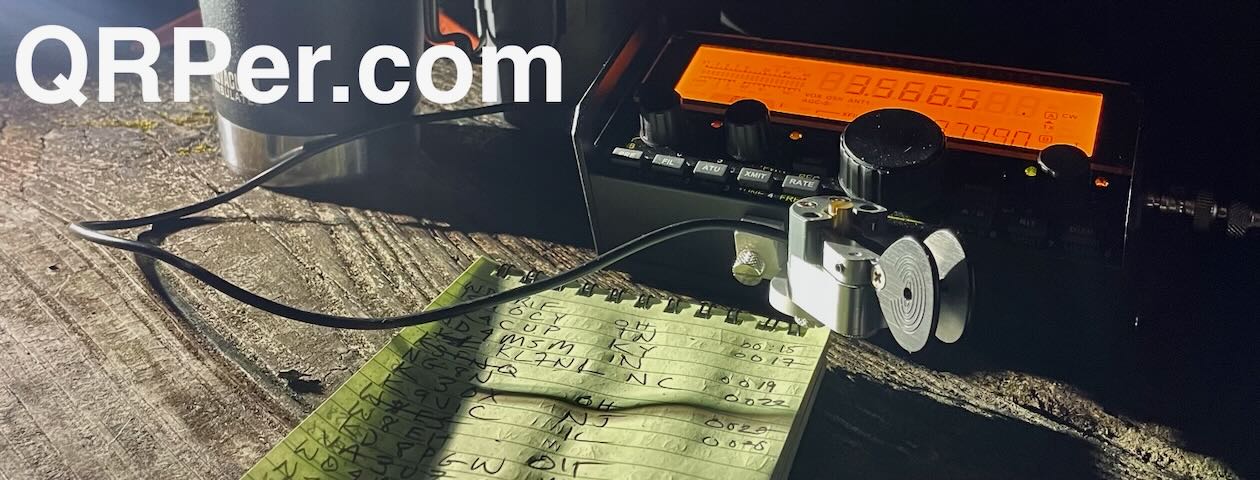 On the morning of May 10, 2021, I had a hankering to head to the Blue Ridge Parkway for a quick park activation.
On the morning of May 10, 2021, I had a hankering to head to the Blue Ridge Parkway for a quick park activation.
I had a particular spot in mind–one that’s only two miles or so from my QTH as the crow flies. The only wrinkle in my plan was that we were expecting rain all morning and at our house we were in thick fog and light, steady rain.
Normally when I have these conditions, I look for a sheltered site, but I thought it might be a great time to take out the TX-500 since it’s weather-resistant. Why not, right?
I packed the lab599 Discovery TX-500, my Chameleon MPAS 2.0 vertical, and my Elecraft T1 antenna tuner to pair the two. I also brought along some rain gear.
Although the activation site is close to home as the crow flies, it actually takes about 30 minutes to drive there. By the time I reached the site, the skies were mostly clear and the sun was shining! This time of year, it reminds me of living in the UK: if you don’t like the weather, just wait five minutes.
Gear:
- lab599 Discovery TX-500
- Elecraft T1 ATU
- Chameleon CHA MPAS 2.0
- CW Morse “Pocket Paddle”
- Red Oxx C-Ruck
- Bioenno 3 aH LiFePo Battery (Model BLF-1203AB)
- Tom Bihn Large Travel Tray
- Rite In The Rain Weatherproof Cover/Pouch (affiliate link)
- Muji A6 Notepad (affiliate link)
On The Air
This was very much a road side activation. The spot I chose isn’t an overlook–although it did provide amazing views–it was simple a pull-off.
This is where antennas like the MPAS 2.0 are so useful: they are self-supporting and very quick to deploy. Since I was set up right off the road, I also appreciate using verticals rather than wire antennas since the antenna and throw line aren’t in the way of others who might choose to park in the same pull-off. I can easily deploy the counterpoise and feedline so that it’s out of the way.
As with most park activations, I started on 40 meters CW and only operated 5 watts.
I quickly racked up five contacts on 40 meters, then the band fell silent.
I moved up to 30, then 20, down to 80, back to 60 and 40 again.
About 30 minutes had passed since I was last on 40 meters, so new hunters were checking the bands. I snagged a total of seven more contacts in about eleven minutes.
Obviously, 40 meters was the only band open that morning!
A quick note about 80 meters
 I get a lot of questions from readers and YouTube subscribers about my use of the 80 meter band during the daytime.
I get a lot of questions from readers and YouTube subscribers about my use of the 80 meter band during the daytime.
I go into more detail about this in the video, but contrary to what many think, 80 meters can be a very useful daytime band for POTA activators.
While it’s true that you’re not going to work DX on 80 meters during the daylight hours (else, highly unlikely), you can still work local and regional stations.
Keep in mind that POTA, WWFF, and SOTA activations aren’t about working DX. DX is fun and perhaps a personal goal, but it has nothing to do with success in achieving a valid activation.
Basically, any contacts–DX or local–will get you what is needed for a valid activation.
If, like me, you live in a part of the country where there are a concentration of park and summit hunters/chasers within a daytime 80 meter footprint, then hop on that band and give it a go!
I’m not sure how useful this might be for activations in sparsely populated areas like Montana or the Dakotas, for example, but along the east and west coast, 80 meters is your friend.
At this particular activation, I didn’t didn’t employ an efficient antenna for 80 meters. While I’ve made numerous 80 meter contacts on the CHA MPAS 2.0 in the past, it’s just not physically large enough to be efficient on that band. The CHA Emcomm III Portable or another long wire antenna would have provided better results. But I knew that 40 meters and possibly 30 meters would be my best bet that day, so the MPAS 2.0 was a great choice.
Again: don’t forget about 80 meters. It’s helped me snag many an activation!
Video
Here’s my real-time, leal-life, no-edit video of the entire activation:
Click here to view on YouTube.
You might hear an audio pop when I’m keying on the TX-500. This is happening because I have the audio gain cranked up all the way for the video. While the speaker/mic can get quite loud, when I’ve got it located so far from the camera mic, I run it at 100% volume to be heard. I recently changed my CW T/R recovery time from 100ms to 400s which eliminated most of the audio popping.
Thank you for reading this field report! I hope you’re getting an opportunity to take your radios outdoors this week!
Do you enjoy QRPer.com?
Please consider supporting us via Patreon or our Coffee Fund!
Your support makes articles like this one possible. Thank you!








interesting comment on 80 – when you do utilze it, what is your antenna of choice?
I would like to have your comments to study.